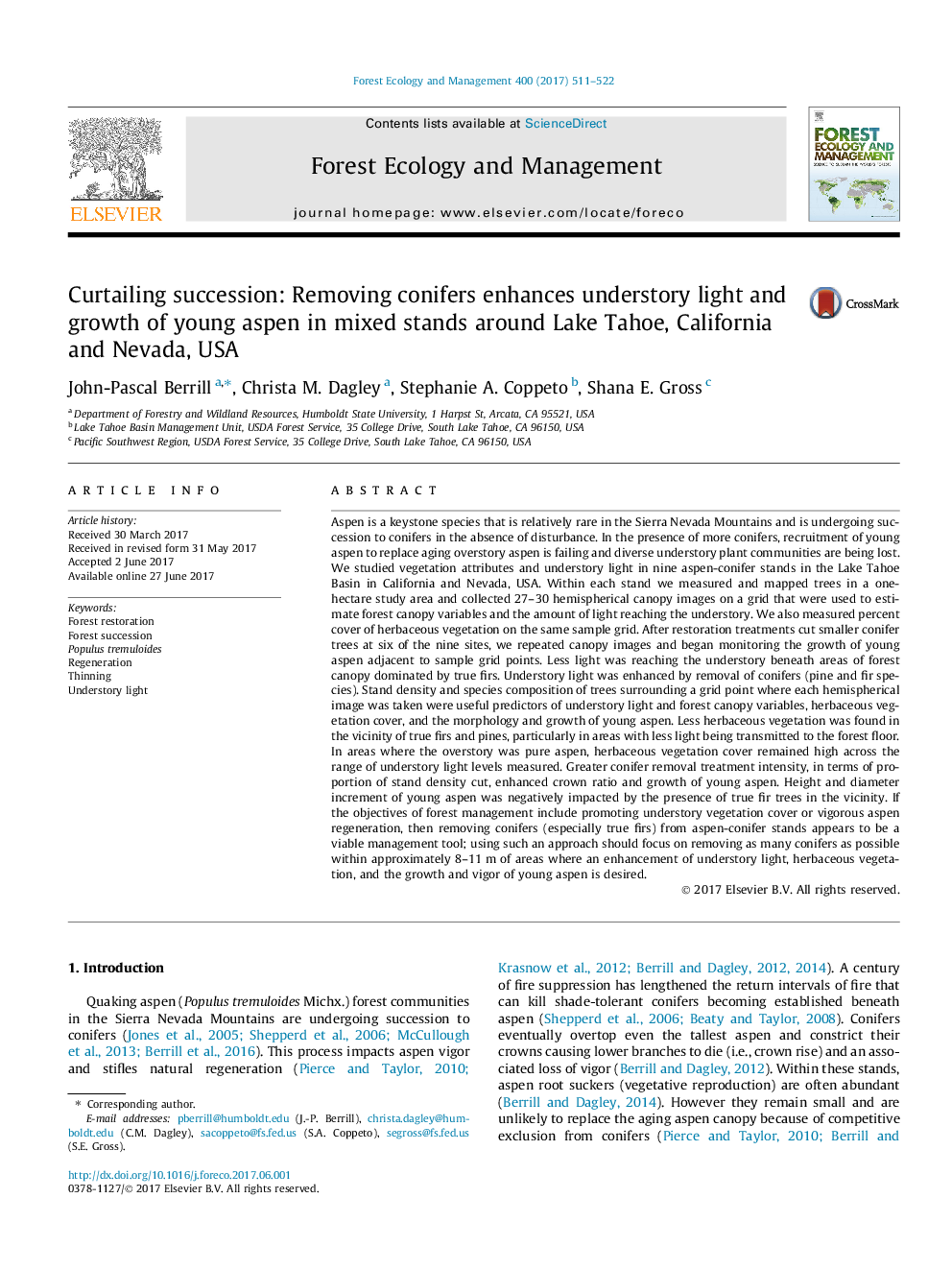| کد مقاله | کد نشریه | سال انتشار | مقاله انگلیسی | نسخه تمام متن |
|---|---|---|---|---|
| 6459291 | 1421358 | 2017 | 12 صفحه PDF | دانلود رایگان |
- Undisturbed Sierra Nevada aspen stands are undergoing succession to conifers.
- Heavier shade and presence of conifers impacted herbaceous vegetation cover.
- Restoration treatments removing conifers enhanced understory light.
- Heavier cutting of red and white fir promoted growth and vigor of young aspen.
Aspen is a keystone species that is relatively rare in the Sierra Nevada Mountains and is undergoing succession to conifers in the absence of disturbance. In the presence of more conifers, recruitment of young aspen to replace aging overstory aspen is failing and diverse understory plant communities are being lost. We studied vegetation attributes and understory light in nine aspen-conifer stands in the Lake Tahoe Basin in California and Nevada, USA. Within each stand we measured and mapped trees in a one-hectare study area and collected 27-30 hemispherical canopy images on a grid that were used to estimate forest canopy variables and the amount of light reaching the understory. We also measured percent cover of herbaceous vegetation on the same sample grid. After restoration treatments cut smaller conifer trees at six of the nine sites, we repeated canopy images and began monitoring the growth of young aspen adjacent to sample grid points. Less light was reaching the understory beneath areas of forest canopy dominated by true firs. Understory light was enhanced by removal of conifers (pine and fir species). Stand density and species composition of trees surrounding a grid point where each hemispherical image was taken were useful predictors of understory light and forest canopy variables, herbaceous vegetation cover, and the morphology and growth of young aspen. Less herbaceous vegetation was found in the vicinity of true firs and pines, particularly in areas with less light being transmitted to the forest floor. In areas where the overstory was pure aspen, herbaceous vegetation cover remained high across the range of understory light levels measured. Greater conifer removal treatment intensity, in terms of proportion of stand density cut, enhanced crown ratio and growth of young aspen. Height and diameter increment of young aspen was negatively impacted by the presence of true fir trees in the vicinity. If the objectives of forest management include promoting understory vegetation cover or vigorous aspen regeneration, then removing conifers (especially true firs) from aspen-conifer stands appears to be a viable management tool; using such an approach should focus on removing as many conifers as possible within approximately 8-11Â m of areas where an enhancement of understory light, herbaceous vegetation, and the growth and vigor of young aspen is desired.
284
Journal: Forest Ecology and Management - Volume 400, 15 September 2017, Pages 511-522
